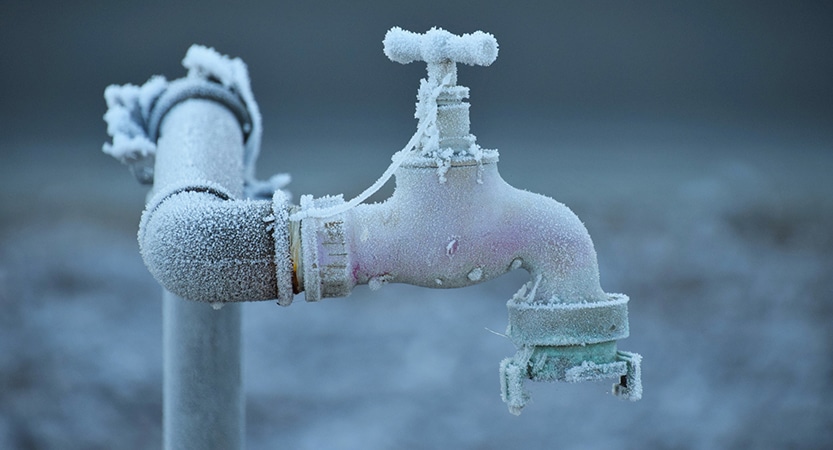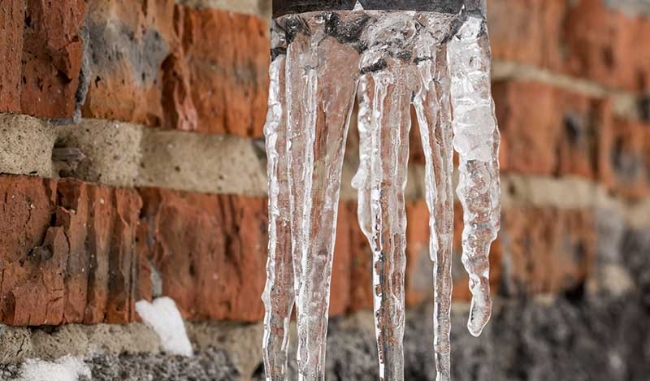Protecting Against Frozen Plumbing in Cold Weather: Key Advice
Protecting Against Frozen Plumbing in Cold Weather: Key Advice
Blog Article
On this page in the next paragraphs yow will discover additional exceptional facts concerning 6 Ways to Prevent Frozen Pipes.

Cold weather can damage your plumbing, particularly by freezing pipelines. Here's exactly how to prevent it from occurring and what to do if it does.
Intro
As temperature levels decrease, the threat of icy pipelines increases, potentially leading to pricey repairs and water damage. Recognizing just how to prevent icy pipelines is vital for home owners in cool climates.
Recognizing Frozen Pipes
What creates pipelines to ice up?
Pipes ice up when exposed to temperatures below 32 ° F (0 ° C) for prolonged durations. As water inside the pipes freezes, it expands, taxing the pipeline walls and possibly creating them to rupture.
Dangers and damages
Icy pipelines can result in supply of water disturbances, residential or commercial property damages, and expensive repairs. Ruptured pipelines can flooding homes and cause considerable architectural damage.
Indicators of Frozen Pipes
Identifying frozen pipelines early can prevent them from bursting.
Exactly how to identify frozen pipes
Try to find reduced water circulation from taps, unusual smells or noises from pipelines, and visible frost on subjected pipelines.
Avoidance Tips
Shielding vulnerable pipes
Cover pipes in insulation sleeves or utilize warmth tape to shield them from freezing temperatures. Concentrate on pipes in unheated or outside locations of the home.
Heating strategies
Maintain interior spaces properly heated up, particularly areas with pipes. Open cabinet doors to permit warm air to circulate around pipes under sinks.
Protecting Outdoor Pipes
Yard pipes and outside faucets
Separate and drain yard hose pipes before wintertime. Set up frost-proof faucets or cover exterior taps with shielded caps.
What to Do If Your Pipelines Freeze
Immediate activities to take
If you believe frozen pipes, keep taps open up to alleviate stress as the ice thaws. Make use of a hairdryer or towels taken in hot water to thaw pipes gradually.
Long-Term Solutions
Structural changes
Consider rerouting pipes far from outside wall surfaces or unheated areas. Add additional insulation to attic rooms, basements, and crawl spaces.
Updating insulation
Invest in top quality insulation for pipes, attics, and walls. Proper insulation aids maintain constant temperature levels and lowers the threat of icy pipelines.
Conclusion
Avoiding frozen pipes needs positive steps and quick responses. By recognizing the reasons, signs, and safety nets, home owners can protect their pipes during cold weather.
5 Ways to Prevent Frozen Pipes
Drain Outdoor Faucets and Disconnect Hoses
First, close the shut-off valve that controls the flow of water in the pipe to your outdoor faucet. Then, head outside to disconnect and drain your hose and open the outdoor faucet to allow the water to completely drain out of the line. Turn off the faucet when done. Finally, head back to the shut-off valve and drain the remaining water inside the pipe into a bucket or container. Additionally, if you have a home irrigation system, you should consider hiring an expert to clear the system of water each year.
Insulate Pipes
One of the best and most cost-effective methods for preventing frozen water pipes is to wrap your pipes with insulation. This is especially important for areas in your home that aren’t exposed to heat, such as an attic. We suggest using foam sleeves, which can typically be found at your local hardware store.
Keep Heat Running at 65
Your pipes are located inside your walls, and the temperature there is much colder than the rest of the house. To prevent your pipes from freezing, The Insurance Information Institute suggests that you keep your home heated to at least 65 degrees, even when traveling. You may want to invest in smart devices that can keep an eye on the temperature in your home while you’re away.
Leave Water Dripping
Moving water — even a small trickle — can prevent ice from forming inside your pipes. When freezing temps are imminent, start a drip of water from all faucets that serve exposed pipes. Leaving a few faucets running will also help relieve pressure inside the pipes and help prevent a rupture if the water inside freezes.
Open Cupboard Doors
Warm your kitchen and bathroom pipes by opening cupboards and vanities. You should also leave your interior doors ajar to help warm air circulate evenly throughout your home.

Do you really like reading about Winter Plumbing Precautions: Preventing Frozen Pipes? Place feedback down the page. We would be pleased to know your views about this blog posting. In hopes that you come back again in the near future. Do you know another person who is serious about the niche? Take a moment to share it. Thanks so much for taking the time to read it.
Estimate Free Report this page